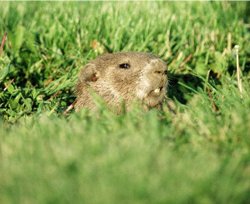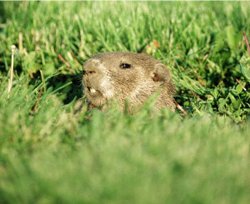
Shadow Portraits

 |
Shadow Portraits
|
 |
Now these are actually very fun to do! It may seem like it in writing, but wait till you get started! They are, also, educational. "How?" you ask? We'll tell you!
First, what is a Shadow Portrait? A shadow portrait is a trace outline of the shadow of a person's face. You can do this one of two (2) ways. We'll share both ways with you.
Second, onto the instructions...
Shadow Portraits: Method #1 - Variation #1:
| Materials
Black Construction Paper (or some other black paper) Instructions 1.) Find a spot on a wall where someone can get around to trace your face. Standing on a wall, or sitting on a bed or chair work fine. You, also, need to consider your lighting source. You'll understand why as we go. 2.) Position the person modeling for the portrait. 3.) Play with how you will position your flashlight. Allow children to experiment here. Don't tell them right off. See if they notice what happens to the shadow the closer the flashlight is! What happens the further away the flashlight is? What angle gives you a good shadow? 4.) Position your flashlight on a way that it will cast a shadow that will fit on your piece of paper. It's best if an adult holds the flashlight, as a young child will have difficulty holding it in position. It's even better if you can find a spot where you can place your flashlight. If need be, the person having their shadow traced can hold the flashlight. If you have a steady spot that you can use to place the flashlight so that it will face you a good distance to cast a shadow, do that (e.g., the top of a TV set, table, or cabinet). Place a towel under it to hold it in place. 5.) Tape Construction paper to the wall where your shadow will be cast. 6.) The artist is now ready to trace the shadow! 7.) Cut out shadow, or leave as a portrait! Whatever you choose! Take turns tracing one another's shadows! |
Shadow Portraits: Method #1 - Variations Using
other Materials
We do not want anyone to miss out on the opportunity to do this fun project, because they may not have all of the Materials listed above. So, here goes...
| 1.) What to do if you do not have Black Construction
Paper, or other black paper: If need be, you can paint (or color
with crayon/marker) a piece of paper black. This may be difficult to
trace on, so you may want to utilize the other options noted below.).
2.) What to do if you do not have a writing instrument that you can use to trace on black paper: Use a white piece of paper. Trace out the image. Cut it out, and then use that as a template to cut out on black paper! Voila! 3.) Another option, if you do not have black paper, or cannot trace on it: You can use a white piece of paper, trace the shadow, then paint or color it in! Don't have markers or paint? Hey, use the pencil to shade it in! That'll work, too!!! Just angle the pencil on its side to fill in (PLEASE be careful with young children and pencils! Be sure they do not hold them too close to their eyes when using them! Use thick children's pencils for young children, if you can.) 4.) Don't have a flashlight? Find a good lighting source in the room. Position a LAMP, instead of a flashlight. Try utilizing the sunlight streaming n a window, or even outside! Find the time of day when the shadow casts on the side of a building. This, in and of itself is a fun project! |
Shadow Portraits: Method #2:
| Materials: Picture Tracing paper, overhead paper, clear plastic you can use to trace (from a box of something you bought). Look around, see what you can find. Paper Black Paper Pencil or other writing instrument Scissors Instructions: 1.) Find a picture with a headshot. If you don't have one large enough, consider scanning it into your computer and making it larger. If you do not have a scanner, you can visit your local Staples, Kinkos, or other such store that offers this service. 2.) Place tracing paper over the picture and trace out the headshot. 3.) Cut out the outline and use as template to cut out shape from Construction Paper. Either attach to the construction paper with tape, or outline with chalk or other writing instrucment. 4.) Cut out shape from Construction Paper. If you outlined it, you may choose to cut it out, or leave as is. Refer to "Method #1 - Variations Using other Materials" for options on using other materials if the above are not available. Be creative! |